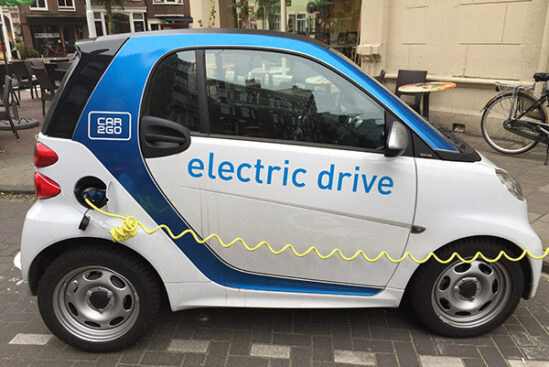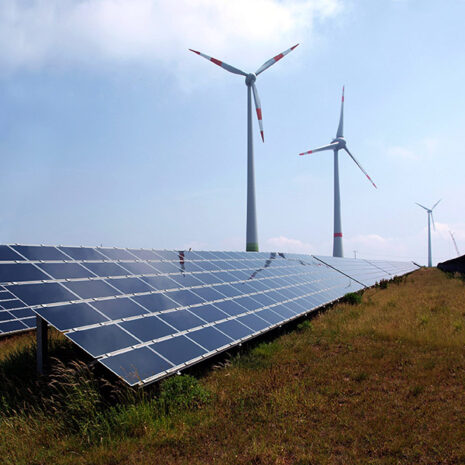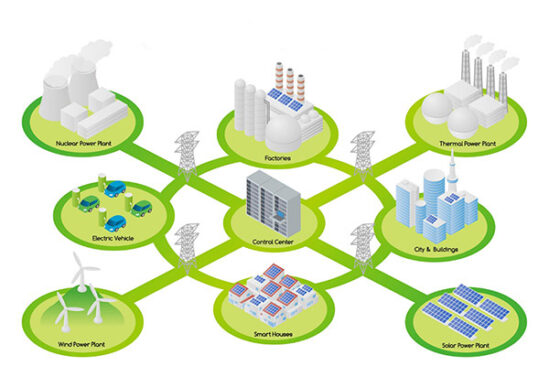“People and their managers are working so hard to be sure things are done right, that they hardly have time to decide if they are doing the right things,” wrote Stephen R. Covey, author of the bestseller, The 7 Habits of Highly Effective People, listed by Time magazine among the 25 most influential business management books in history. Covey’s statement fits in perfectly with our present imbroglio in the power sector, where we incessantly seek reforms using an approach that has already been rendered obsolete by new market forces. The power sector needs a systemic transformation and not symptomatic treatment if we wish to nurse it back to health.
Multiple developments in the world’s energy market have altered the fundamentals of the electricity business. Small power plants are now beating the cost and performance features of large plants. Renewable power generation, even without government support, is proving competitive. Smart information and communication technologies (ICTs) are unlocking new opportunities for power control and demand management in the grid. Battery storage technologies are enabling consumers to reduce, and even eliminate, their dependence on the grid. Electric vehicles (EVs) are also opening up new vistas in their dual role as loads as well as sources of supply.

The “bigger is better and cheaper too” boom of the utility industry, that persisted over a century, finally came to an end in the late 1970s when high fuel prices triggered by the 1973 OPEC oil embargo led to the advent of gas-fired combined cycle plants in the 100 to 200 Megawatts (MW) range (between 1955 and 1970, the world saw generating unit sizes jump seven-fold, from 200 to 1,400 MW). There was no turning back as environmental concerns linked with coal and oil-fired generation kept the push for even smaller and more efficient plants that are now available in 10 to 50 MW sizes as well.
The interest that renewable generation technologies received in the post-oil embargo years, stagnated briefly in the late 1990s, but was rekindled due to the looming threat of climate change, resulting in their coming of age lately. Statistics from International Renewable Energy Agency (IRENA) indicate that 538 Gigawatts (GW) of new photovoltaic (PV) capacity was added since 2010, bringing the total worldwide installed PV capacity to 578 GW by 2019. Similarly, 400 GW of new wind capacity (onshore) was added during the past decade, bringing it to a total of 594 GW. The cost of the PV systems fell by 80 percent and that of the wind systems by 25 percent since 2010. The average levelised costs of electricity (LCOE) meanwhile dropped by 82 percent for solar and 38 percent for onshore wind plants; individual projects saw even greater cost reductions in the past couple of years.

Developments in storage technologies have enabled consumers to opt for the PV or solar systems for meeting their demands, bypassing the grid entirely or using it only as backup. A recent survey by Bloomberg New Energy Finance (BNEF) indicates that the prices of Lithium-ion battery packs fell from $1,100 per kilowatt-hour (kWh) in 2010 to USD 137 per kWh in 2020 and are expected to further fall to $100 per kWh by 2023. The ongoing R&D efforts aim to reduce prices and enhance their capability even more.
The rapid inroads by EVs into the transport sector are significantly impacting electricity demand. In the past five years, EVs have made a spectacular entry into the transport sectors of many developed and some developing countries, notably China and India. The International Energy Agency (IEA), under its Electric Vehicle 30@30 Initiative assumptions, expects the worldwide stock of light-duty electric cars to exceed 220 million by 2030. Those of 2- and 3-wheelers and commercial EVs will be extra.
ICT-based smart-grid technologies being used to modernise the grid are enabling both consumers and utilities to exercise greater flexibility and control over demand as well as supply. Customers can now use smart sensors and control devices to manage their demand to minimise electricity bills and offer some of this capability back to the grid to further cut their electricity bills, and in some cases even to earn money. Additionally these technologies are enabling the utilities also to operate their systems closer to their physical limits, and derive maximum value from the existing assets.
Growth in electricity demand has also dampened around the world as a result of economic slowdowns, availability of more-efficient appliances, and consumers opting for their own supply and demand management. All sectors of the economy are striving for higher values with lower energy use, and are particularly looking to move away from polluting fuels. This trend was evident even before the onset of Covid-19 and most analysts expect it to persist in the future too, as the world is currently passing through a phase which noted management thinker, Peter Drucker, had characterised as “knowledge economy.”
Collectively, the above trends are being termed “disruptive” by industry analysts because these are challenging the fundamental principles of the electricity business to the extent that some even predict that these forces may push the traditional electric utilities into a “death spiral.” To recover capital investments in supply facilities, electric utilities need to raise rates; however, what they find to their dismay is that it shrinks their revenues further, as it prompts more and more customers to seek alternatives to grid supply.
The traditional electricity business operating model, in which power flows predominantly in one direction (from public- or privately-owned power generating plants to the end-users via the grid) and revenues flow in the opposite direction (from end-users to the power company), with prices fixed and controlled by a regulator, is not proving effective any more in dealing with the new challenges presented by the emerging market.
In the changed environment, power can and will flow in either direction, sometimes within local loops, as some of the consumers may now be able to meet part or all of their electricity demand by their own generation. This will enable them to avoid the grid altogether or use it only for backup and, not infrequently, provide the utility their excess-generating capability to contribute to grid security and reliability. Like power, revenues can and will also flow in either direction.
The power sector in Pakistan, like everywhere else in the world, also faces a turning point. There is a compelling need to transform it along more imaginative and innovative lines to deal effectively with the emerging challenges. A “problem-driven” approach that focuses mainly on reducing losses, improving bills recovery, and promoting competition in some functions, though necessary, will not be sufficient. It needs a “vision-led” transformation in its legal and regulatory framework, its systems, its institutions, its business model, and its investment and pricing schemes.
In the absence of a favourable business environment, the newer technologies and distribution systems will still be “connected” with the grid, but they will not be optimally “integrated,” raising multiple challenges. Consumers will lose too, because the benefits associated with their newer technologies and schemes may not be realised to the full extent. The society, as a whole, will thus suffer. To handle these challenges and harness the opportunities these hold, we will need to recast the electricity business in the country.
First, the government will need to provide an enabling legal framework to encourage the deployment of distributed generation, storage technologies, and demand-management schemes. This framework should empower sector entities to devise innovative pricing and compensation schemes to induce consumers and investors to install these technologies in the system. It should also enable proper accounting, allocation and recovery of costs from participating consumers and investors while allowing them a fair compensation for the value they contribute to the grid.
The new framework should also encourage deployment of storage technologies in the country, as these will enhance the value of renewable energy technologies while easing their intermittency and variability constraints. Similarly, besides being a source of meeting new electric demand, battery packs in EVs can also support the grid in more economical ways than the traditional solutions.
Second, the electricity business in the country will need to be reorganised along more open and flexible lines to treat these new distributed supply and demand options not as competitors or threat but as partners in the utility’s own efforts to serve the nation with reliable and economical electricity. The utility managers should not just encourage, but aggressively seek contributions from customers and investors on newer options and technologies.
Third, load-serving entities will need to develop appropriate tools and data, and information and knowledge bases, and make these freely accessible to customers and investors for assessing the scope and viability of these schemes for meeting the demand for electricity at source and their contribution to the grid. This should also include any technical assistance they might need for making such assessments.
Fourth, since the grid will act as the enabling platform for integration and operation of diverse and distributed technologies, we will need to modernise the existing transmission and distribution networks to transform these into a smart grid that can facilitate successful integration of emerging technologies and schemes. The modernised grid must be capable of bringing together a host of energy technologies and processes, and various market actors, producers, operators, and end-users, with the aim of optimising resource utilisation and operational performance, minimising economic and environmental costs, and maximising system reliability and resilience.

The challenges that we face in the power sector are admittedly grave and daunting, and defy simple and easy solutions. Outdated and obsolete reform approaches that we have used in the past to fix this sector will not work any longer. We are in dire need of a vision-led and bold set of initiatives to transform this sector from its current bleeding condition into a viable and vibrant contributor to our people and the country’s economy in the future.

The writer is a freelance consultant, specialising in sustainable energy and power system planning and development.

